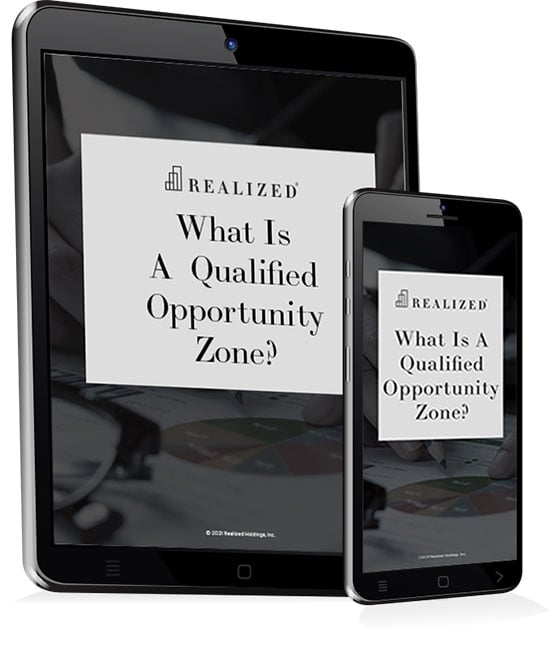
If you’ve read any of our previous blogs about the Qualified Opportunity Zone (QOZ) program, you should have come away with the following:
1) The program is geared toward providing assistance to economically challenged areas in the United States, and
2) It is structured to help defer -- and potentially reduce -- capital gains taxes for investors.
As much as it’s being presented as a tax-deferral initiative geared toward doing good, the QOZ program is, first and foremost, an investment. You, the investor, will be putting your capital gains into a Qualified Opportunity Fund (QOF), which then supports a QOZ project(s). In addition to examining the program as a tax-deferral vehicle, it’s an even better idea to examine it as an investment vehicle. Doing this successfully requires an understanding of the QOFs’ components, and how they structure potential returns.
The Return Components
The QOF you are targeting for potential investment should offer a prospectus that provides you with an idea of anticipated returns through the following.
Tax Benefits. The QOZ program supports using tax incentives to attract investors looking for something to do with their capital gains from asset sales. When analyzing the program for investment purposes, it’s a good idea to determine the tax-equivalent yield based on a projected return for the QOZ investment, and measure it against other suitable investment options.
Cash Flow. The downside here is that QOZ projects won’t yield cash flow for several years, if at all. Construction, renovation, and adaptive re-use programs can require several years for any kind of return. Projects with different objectives are likely to have different cash-flow projections, depending on asset type and location.
Refinance Proceeds. According to the Internal Revenue Service (IRS) and the U.S. Department of the Treasury, an entity can refinance a QOZ project and distribute proceeds to the Qualified Opportunity Fund without impacting investors’ deferred gains. This can happen, as long as the fair market value doesn’t exceed the QOF partnership interest’s capital investment in a project for tax purposes, otherwise known as tax basis.
Having said all of this, refinancing isn’t modeled in many return projections for a few reasons.
- The assumption that proceeds and payments actually come from outside, or different, funds.
- False precision, or data presented in a manner that implies better results than what could otherwise be justified.
- Differences between construction and permanent financing. A development or renovation loan is generally based on a cost percentage, or loan-to-cost ratio, which finances a project, relative to its construction cost. Meanwhile, a permanent loan will be calculated on market value, leading to a loan-to-value ratio, or rather, a measurement that is based on a property’s appraised value.
While refinancing proceeds are helpful to know, this should not be the sole statistic for investment decision making.
Exit Strategy. An important part of an investment decision is knowing when, and how, the QOF plans to exit from a development or rehab, and how much could potentially be earned. The exit event will likely represent a majority of the investment’s total return, and it will potentially generate a capital gain that would be exempt from taxes if the investment was held for at least ten years.
The Return Structures
Another important aspect of a QOZ investment analysis should be the return structures, which are preferred return, the catch-up clause, and carried interest.
Preferred Return. This profit distribution structure tells you how much priority return you are projected to receive, ahead of the QOF owner or manager. Because investors put up the majority of the monies, they get paid first. If the preferred return hurdle is met, most fund managers begin to participate in the profits.
Catch-Up Clause. Sometimes known as the catch-up provision, this clause kicks in if you and your fellow QOF investors achieve the preferred return target. This component allows the QOF’s owner or manager to receive pre-designated distributions from the investment.
Carried Interest. If you and the QOF manager hit the pre-designated preferred return, the carried interest pays the QOF owner and/or manager an extra fee (a percentage of the back-end profits), for oversight of the fund and its project(s).
One example of a QOF return structure could look like this example:
- A 6% preferred return to investors
- A 50/50 catch-up for the QOF owner/fund manager, until achievement of a 6% return for the QOF owner/funder manager
- A carried interest totaling 20% of the profits to the owner/manager, and 80% to the investors
A higher up-front preferred return, could mean a lower percentage of profits above the preferred return hurdle, which is something to keep in mind as you review the prospectus.
The Returns Decision
Investing in a Qualified Opportunity Zone project can be a worthwhile endeavor, both from a socially responsible viewpoint, as well as a tax-deferral one. However, there is more to a Qualified Opportunity Fund investment than capital gains tax deferrals. Due diligence is required for any investment, and should take into account the investment structure, including potential cash flow, hold period, and internal rate of return projections, among other metrics. Understanding this information can help ensure that a QOF makes sense as an investment decision, and an appropriate addition to your portfolio.
For additional information as to whether a Qualified Opportunity Fund is a good addition to your portfolio, contact Realized Holdings by logging on to www.realized1031.com, or by calling 877.797.1031.
No public market currently exists, and one may never exist, for the interests of any QOZ program. The purchase of interests in any QOZ program is speculative and is suitable only for persons who have no need for liquidity in their investment, and who can afford to lose their entire investment.
Example shown is hypothetical and for illustrative purposes only.
This material is for general information and educational purposes only. Information is based on data gathered from what we believe are reliable sources. It is not guaranteed as to accuracy, does not purport to be complete and is not intended to be used as a primary basis for investment decisions. It should also not be construed as advice, meeting the particular investment needs of any investor.
There is no guarantee that the investment objectives of any particular program will be achieved.
The actual amount and timing of distributions paid by programs is not guaranteed and may vary. There is no guarantee that investors will receive distributions or a return of their capital. These programs can give no assurance that they will be able to pay or maintain distributions, or that distributions will increase over time.



